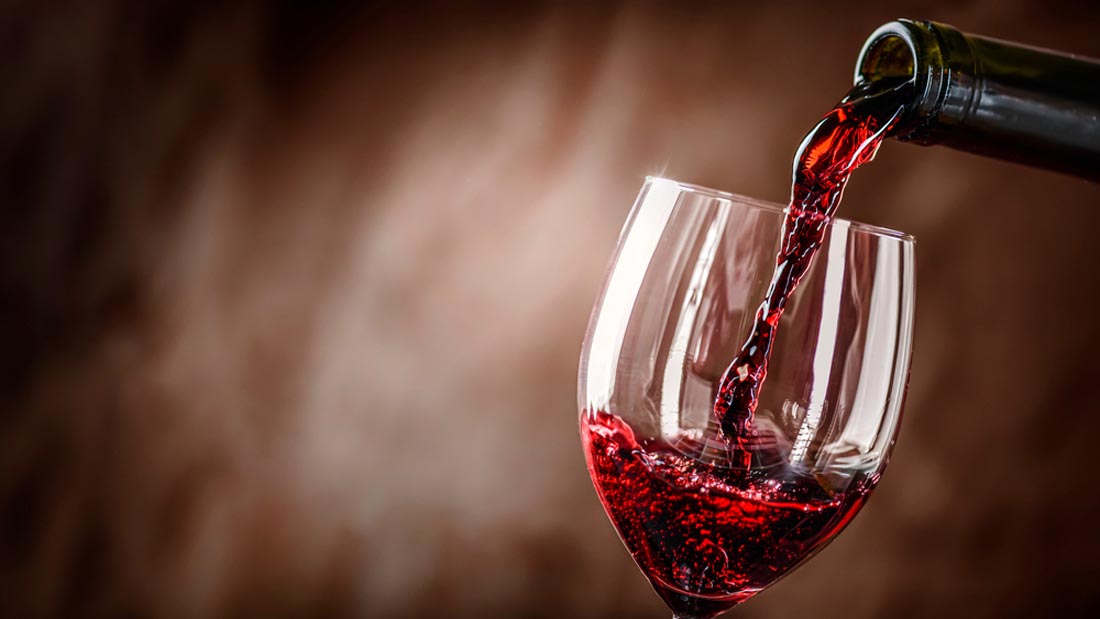
15 Jan How Do Wines Get Their Distinctive Colours
Colour is a crucial part of the wine tasting experience, and it tells you much more about the wine than whether it’s red, white, or rosé. The wine gets its colour from the grape skins. When you squeeze or press grapes, including black ones, you will notice that the juice could be anything between golden to colourless. The famously light champagne is the perfect example of this as it’s made from darker grapes such as Pinot Meunier Pinot Noir but always comes out a superior golden and is delicious too.
Aspects That Affect Grape Colour
As plants grow, various pigments such as carotenoids, betalains, and chlorophyll, come into the picture which helps with the colouration process. Anthocyanin is the versatile pigment that dominates the entire process. This phenolic compound has a structure similar to tannins, and vinifera grapes have 20 different types of anthocyanin
It presents itself in various hues; the hue depends on the grape types and the grape’s surrounding tissue pH levels. Lower pH levels lend the wine a redder hue while higher pH levels shift to the other end of the visible light spectrum, resulting in a bluer colour.
How the Grape Colours Transform During the Fermentation Stage
Once the winemaking process gathers speed, the pigment is extracted right after the grape crushing stage. These pigments are generally soluble only at lower temperatures. Within five to eight days after the maceration process, the colour begins to become more concentrated. This is called the “ceiling”. Typically, there is some decline after the wine has attained this level of concentration.
Winemakers use various techniques to help increase the colour concentration. Quercetin and gallic acid, which are monomeric phenolic compounds, are some of the co-factors that bind with the anthocyanin during extraction, after which they become stagnant until the point when they are required for polymerization.
Other Things That Are Affected By Anthocyanin In A Grape
More abundant colour polymers and tannins are used to achieve greater reductive strength. This aspect and the antioxidants capacity shapes the wine’s longevity. Tannins continue to expand and polymerize until they reach their full capacity and are then capped at this point by including a colour molecule at each end.
This phenomenon typically occurs when higher ratios of colours to tannins result in shorter polymers that have greater reductive strength. Ultimately, this means that the mix can absorb oxygen over time, and no oxidation occurs; your wine quality isn’t affected in any way. Also, the wine colours are preserved and retained by the tannins bonding ability and vice-versa.
How Wine Colour, Texture and Concentration Are Interconnected
As you can see, many different aspects affect the colour of wines. Colour is the first indicator when it comes to the taste of wine, and it gives you a better sense of what’s to come. If you notice that white wine has a slightly greenish hue with a hint of yellow, you will find it is crisp and light.
If you are enjoying a glass of red wine, tilt it over a piece of light-coloured paper and are unable to see your fingers through the wine, you can expect it to be more concentrated and full-bodied. These simple tests indicate that there is a connection between colour, texture and concentration.
Regardless of the types of wines you prefer, proper wine storage is crucial to maintaining their condition, colour, texture and flavour. The best way to ensure this happens is to hire skilled and experienced custom wine cellar designers like us. Our team is highly qualified and creative in their approach.
They will make sure that the wine cellar they design for you is right in line with your needs and preferences. We are committed to providing our clients with the best services and focus on creating unique wine cellar designs that complement their homes and style sense.
To find out how Signature Cellars can help you design and build a wine storage solution that can help protect your investment and add value to your home, call us on 1300 570 636 or email info@signaturecellars.com.au, and we will respond shortly. You can discuss your specific requirements with our team that will provide their inputs and provide superb solutions.
Thanks for reading,
Neil Smallman
Signature Cellars
1300 570 636




No Comments